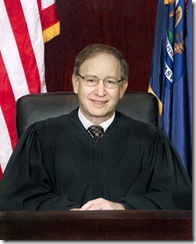As prosecutions go, the one against Arthur Muniz was a slam dunk for the Wayne County prosecutor’s office.
Muniz was charged with shooting Gutierrez, his old girlfriend’s new boyfriend, once in the arm and once in the head.
Muniz admitted he was at the crime scene with a gun but said that someone else — Muniz didn’t know who — fired the shots that injured Gutierrez.
Gutierrez fingered Muniz as the shooter. So did another witness who was in the car with Gutierrez. A Detroit cop said Gutierrez, while bleeding from his wounds, identified Muniz as the shooter.
Muniz’s own mother took the stand and said her son called her after the shooting and confessed.
The jury found Muniz guilty of assault with intent to murder, felon in possession of a firearm and felony firearm.
The jury apparently placed no credence in his claim, elicited by the prosecutor on cross-examination, that everyone but him was lying under oath.
Huh? Wait a minute. Under People v. Buckey, 424 Mich. 1 (1985), prosecutors can’t ask defendants to comment on the credibility of the prosecution’s witnesses.
Defense counsel should have objected.
And maybe he would have had he been awake.
According to a juror’s post-trial affidavit, defense counsel was sound asleep during the prosecutor’s cross-examination. The juror averred:
While the prosecutor was cross-examining Mr. Muniz, I glanced at defense table and was surprised to see that Mr. Muniz’[s] defense attorney [was] sleeping[.] … It was apparent to me that Mr. Muniz’[s] attorney was actually sleeping through a portion of his client’s testimony.
Muniz said his convictions should be overturned because counsel slept during some of the trial.
And then there’s that matter of defense counsel’s arrest for possession of cocaine three weeks before Muniz signed on as a client.
Muniz also claimed counsel was using cocaine during the trial. Muniz argued that drug use would explain counsel’s allegedly crummy direct examination of the defense’s private investigator, and would also explain the many alleged defense errors that ticked-off the trial judge.
Muniz offered no evidence that counsel was actually using drugs during trial. Moreover, counsel was licensed to practice trial although his license was later suspended.
The Michigan appellate courts turned down Muniz’s motion for new trial based on ineffective assistance of counsel.
He fared no better with his habeas petition in the U.S. District Court.
At the 6th U.S. Circuit Court of Appeals, Muniz argued that when counsel sleeps during a client’s trial, prejudice should be presumed under United States v. Cronic, 466 U.S. 648 (1984).
But Judge Eugene Siler said sleeping counsel cases decided under Cronic focus on how long counsel was asleep. The cases that bring habeas relief are those in which the attorney sleeps for substantial portions of the trial.
In denying relief, Siler told Muniz, in effect, that his attorney just took a short nap.
Nothing presumptively prejudicial about that.
Siler reviewed the juror’s affidavit and concluded that:
Muniz’s attorney was asleep for an undetermined portion of a single cross-examination. The record shows that Muniz’s attorney was not asleep for the entire cross since he objected near the end of the questioning. This is especially significant, given that the total cross-examination was fairly short, spanning only 26 pages of trial transcript.
Muniz’s lawyer therefore must have only been asleep for a brief period. This is in contrast to Tippins [Tippins v. Walker, 77 F.3d 682, 687 (2d Cir. 1996)], in which the trial judge himself “testified that [defense counsel] ‘slept every day of the trial.'”
Muniz did no better under Strickland v. Washington, 466 U.S. 668 (1984).
Under Strickland, wrote Siler, a habeas petitioner must show that counsel’s performance was deficient, and the deficiency prejudiced the petitioner’s case.
[B]y putting forward the affidavit of a juror who witnessed Muniz’s attorney sleeping Muniz has made a sufficient showing that the standard of conduct by his attorney fell below the objective standard of reasonableness.
There is no suggestion in the government’s brief, nor could there be, that Muniz’s attorney fell asleep at trial because in his “reasonable professional judgment” it was the best course of action.
But showing prejudice is quite another matter.
There was a mountain of evidence against Muniz. There was only Muniz’s conjecture, but no evidence, that counsel used drugs during trial and screwed up as a result.
And besides, defense counsel didn’t sleep away most of the trial, he just took a short cat nap.
The case is Muniz v. Smith.














